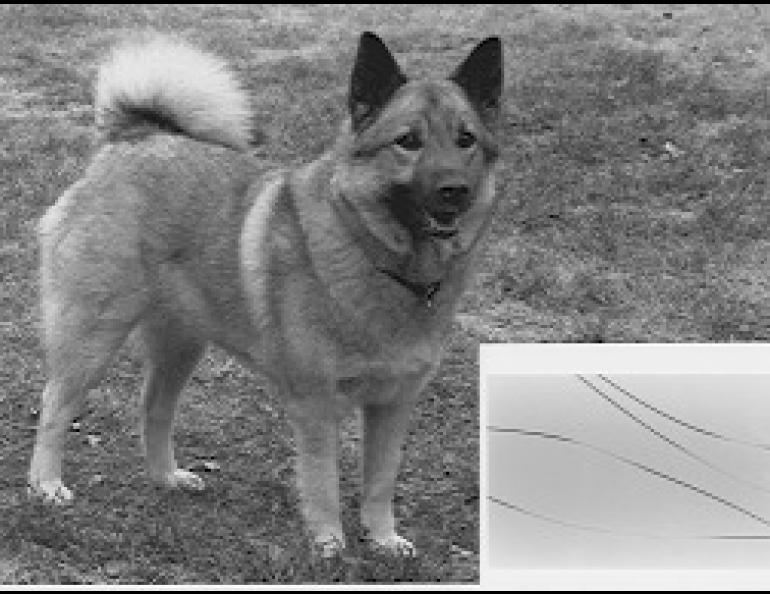
Hair Color
If you have a dog, or a horse, or even a cat, this is the time of year that their hair is everywhere -- long hair, short hair, straight stiff hair, fine wavy hair, black hair, brown hair, white hair, even striped hair. The combination of increasing day length and warmer temperatures triggers the massive shed that most animals go through in the spring.
Look at a single hair, preferably one of the straight outer hairs, with a magnifying glass. It will taper to a fine point at one end, the first end to grow out of the animal's skin, and have a slight thickening at the other end, the hair base. Many hairs have deeper color at the tip than near the base, and some are black at the tip and have one or more bands of brown, red, yellow or cream color as you move toward the base of the hair. This kind of banded hair color is called agouti, after a South American rodent with banded hair. It occurs to varying degrees in at least some hairs of many dogs, cats, horses, and the majority of wild animals of brownish or greyish color. (Human beings and higher primates generally seem to have lost the agouti gene, so banded hair in people occurs only when a trip to the hairdresser is overdue and dyed or bleached hair is growing out.)
We don't fully understand what happens in nature to produce bands of different color in the same hair, but we have a pretty good idea. The key lies in specialized cells called melanocytes, which are derived from the same embryonic structure as our backbones and nervous systems. These cells migrate into the skin fairly early in development (at about eleven weeks in a human pregnancy). Some remain in the skin, while others move into the developing hair bulbs -- the structures which produce hair.
Melanocytes act as factories for the production of granules of the pigment, melanin. Those in the skin inject melanin (usually eumelanin, the black or dark brown version) into the dividing cells at the base of the skin. Their action is stimulated by ultraviolet radiation, leading to tanning in human beings. In furred animals, this leads to dark skin on noses and around eyes, and sometimes to dark areas where hair has been shaved. The number of melanocytes doesn't seem to vary much by race in human beings, but their level of activity does.
The melanocytes that migrate into the hair bulbs inject their pigment directly into the developing hair shaft. Their activity tends to be highest as the point of the new hair is first being formed, which is probably why many reddish animal hairs are darker at the tip than at the base. Once the hair is visible above the skin, the color of that part of the hair is fixed. In other words, if hair turned white overnight, you wouldn't see it the next morning, but only as white appearing gradually at the base of the growing hair, just like dark hair showing at the base of the hairs as a bleach job is growing out.
The agouti gene produces banded hair by periodically changing the kind of pigment (eumelanin or a reddish pigment called phaeomelanin) produced by the melanosomes that are injecting pigment cells into the base of the hair. The change is observed to take place very rapidly along the hair, and on a given animal affects only certain kinds of hair. On bay horses, for instance, the coarsest hairs (mane, tail, lower legs and whiskers) are black, the softer body hairs are red-brown, and variable numbers of black-tipped red hairs appear along the back, sometimes producing shadings down the sides. Tabby cats have solid black hairs in the dark stripes and banded ones in the light stripes. Agouti coloring in domestic dogs ranges from fawn with a few black-tipped hairs (great Danes and boxers) to dogs with black guard hairs and a tan undercoat (my Shelties) to dogs with several bands per hair of black and very pale cream (Norwegian elkhounds). Wolves, coyotes, rabbits, mice, and most other wild animals have a high percentage of banded hair.
If you don't have a pet, try your parka ruff. You may be surprised at the complex pattern the melanocytes can produce.
Related articles are available on black vs. brown or yellow pigmentation , dilute pigmentation , Siamese coloring in cats , and white markings in domesticated animals .




